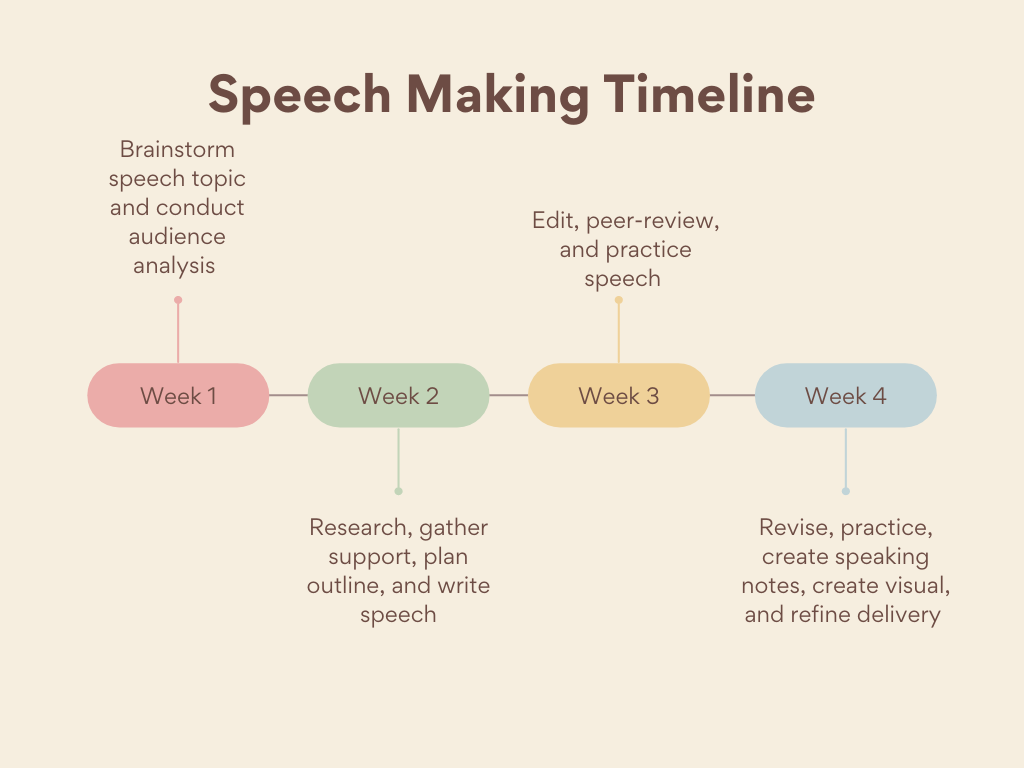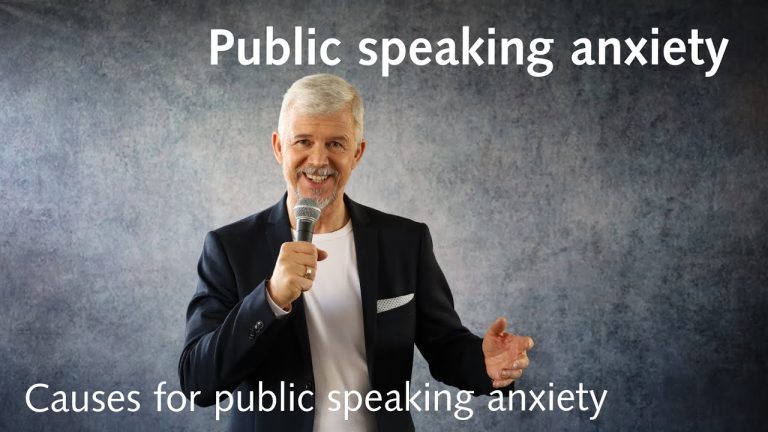What Is An Extemporaneous Speech?
If you’ve ever wondered, “What is an extemporaneous speech?” you’re in the right place! In this article, we’ll dive into the exciting world of extemporaneous speaking and discover what makes it a unique and thrilling form of communication. So, buckle up and get ready for an adventure in public speaking that’s going to blow your socks off!
Picture this: you’re standing in front of a crowd, your heart pounding with anticipation. The spotlight is on you, and you have limited time to come up with a persuasive and cohesive speech on a given topic. That’s what an extemporaneous speech is all about! It’s a thrilling challenge that tests your ability to think on your feet and deliver a compelling message without the luxury of extensive preparation.
But don’t fret! Extensive preparation doesn’t mean you’re left hanging in the wind. In fact, extemporaneous speakers use a variety of skills, such as critical thinking, research, and organization, to craft their speeches on the spot. So, if you’re ready to unleash your inner orator and captivate audiences with your spontaneous wit and charm, let’s dive deeper into the world of extemporaneous speaking!

Understanding Extemporaneous Speech: A Guide to Spontaneous Expression
Welcome to our comprehensive guide on extemporaneous speech! Whether you’re a seasoned public speaker or just starting out, understanding what an extemporaneous speech is and how to deliver one effectively is crucial. In this article, we will explore the definition of an extemporaneous speech, its components, benefits, and provide tips for delivering an impressive extemporaneous speech. So, let’s dive right in!
What is an Extemporaneous Speech?
An extemporaneous speech is a type of public speaking that requires speakers to present a well-researched and organized speech on a given topic without extensive preparation or a fully written script. Unlike a scripted speech, where every word is written beforehand and memorized, an extemporaneous speech allows speakers to use notes or prompts for guidance while delivering their presentation.
Extemporaneous speeches are commonly used in academic settings, such as debates, competitions, and classroom presentations. They test the speaker’s ability to think on their feet, organize their thoughts quickly, and deliver a coherent and persuasive argument or message. Extemporaneous speaking combines elements of impromptu speaking and prepared speeches, striking a balance between spontaneity and structure.
One of the key aspects of an extemporaneous speech is the delivery style. Speakers should aim to maintain a conversational tone, engage the audience, and connect with them authentically. While some level of preparation is allowed, the main goal of an extemporaneous speech is to demonstrate critical thinking skills, adaptability, and effective communication.
The Components of an Extemporaneous Speech
Before diving into the process of delivering an extemporaneous speech, let’s take a closer look at its essential components:
- Preparation: While an extemporaneous speech is not fully scripted, it still requires some level of preparation. Speakers should gather information on the given topic, research relevant data, and formulate key points or arguments. This step ensures that the speech is well-informed and coherent.
- Structure: An extemporaneous speech typically follows a basic structure, including an introduction, body, and conclusion. The introduction should grab the audience’s attention, introduce the topic, and provide a clear thesis statement. The body should consist of main points supported by evidence, while the conclusion should summarize the key ideas and leave a lasting impression.
- Delivery: As mentioned earlier, the delivery of an extemporaneous speech should be conversational and engaging. Speakers should maintain eye contact with the audience, use appropriate gestures and body language, and speak clearly and confidently. It is important to strike a balance between sticking to the main points and allowing flexibility in responding to the audience’s reactions.
Tips for Delivering an Impressive Extemporaneous Speech
Now that we have a basic understanding of what an extemporaneous speech entails, let’s explore some tips for delivering an impressive extemporaneous speech:
- Practice active listening: Engage in active listening to absorb information and gather different perspectives on the given topic. This will enable you to develop a well-rounded and informed speech.
- Understand the audience: Consider the demographics, interests, and knowledge level of the audience. Tailor your speech to resonate with them and address their specific needs or concerns.
- Organize your thoughts: Utilize note-taking techniques, such as mind maps or bullet points, to organize your thoughts and maintain a clear structure during your speech.
- Practice improvisation: Embrace impromptu speaking opportunities to enhance your ability to think on your feet and respond to unexpected questions or challenges.
- Focus on body language: Pay attention to your body language, facial expressions, and vocal tone. Maintain a confident posture, make eye contact with the audience, and use gestures to emphasize your points.
- Engage the audience: Make your speech interactive by asking questions, incorporating storytelling, or inviting the audience to participate. This will create a dynamic and memorable experience.
- Reflect and learn: After delivering your extemporaneous speech, take the time to reflect on your performance. Identify areas for improvement, seek feedback from others, and continue refining your skills.
Benefits of Mastering Extemporaneous Speaking
Moving beyond the basics, let’s explore some of the benefits of mastering extemporaneous speaking:
1. Enhanced Communication Skills
Extemporaneous speaking hones your ability to articulate ideas clearly, engage with an audience, and adapt your message based on their reactions. This translates into improved communication skills that are valuable in various personal and professional scenarios.
2. Critical Thinking and Problem-Solving
Delivering an extemporaneous speech requires quick thinking, analyzing information, and developing logical arguments on the spot. By regularly practicing this skill, you’ll strengthen your critical thinking and problem-solving abilities.
3. Confidence Building
As you become more adept at delivering impromptu speeches, your self-confidence will grow. The ability to express yourself confidently and coherently in front of an audience can boost your self-esteem and positively impact other areas of your life.
Mastering Extemporaneous Speaking: A Lifelong Journey
Now that you have the knowledge and tips to deliver an impressive extemporaneous speech, it’s time to embark on your journey of mastering this valuable skill. Remember, extemporaneous speaking requires practice, patience, and a willingness to step out of your comfort zone. Embrace each speaking opportunity as a chance to grow and learn, and soon you’ll be captivating audiences with your well-crafted and spontaneous speeches. Happy speaking!
Key Takeaways: What is an Extemporaneous Speech?
- An extemporaneous speech is a speech that is delivered without extensive preparation.
- It allows the speaker to effectively communicate their ideas in a spontaneous and natural manner.
- This type of speech is commonly used in competitions or public speaking events.
- Key skills for delivering an extemporaneous speech include good organization, clear articulation, and the ability to think on your feet.
- Practicing and familiarizing yourself with different topics can help improve your extemporaneous speaking skills.
Frequently Asked Questions
Welcome to our frequently asked questions section where we’ll answer common inquiries about extemporaneous speeches. Whether you’re a student preparing for a school assignment or an aspiring public speaker, we’ve got you covered. Discover the ins and outs of extemporaneous speaking below.
1. How would you define an extemporaneous speech?
An extemporaneous speech is a type of impromptu presentation where the speaker delivers a prepared speech without relying on a script or memorized content. It requires the speaker to think on their feet and express their thoughts and ideas in a clear, concise, and organized manner. Rather than being fully spontaneous, an extemporaneous speech involves some level of preparation, research, and organization. This type of speaking encourages adaptability and quick thinking.
Extemporaneous speeches are often given in educational settings, competitions, or professional environments. They help develop skills such as critical thinking, effective communication, and the ability to convey complex ideas in a limited amount of time.
2. How does an extemporaneous speech differ from other types of speech?
An extemporaneous speech differs from other types of speeches, such as impromptu speeches, scripted speeches, or memorized speeches, in several ways. Unlike an impromptu speech, which is delivered with little to no preparation, an extemporaneous speech involves some level of prior research and organization. It allows speakers to gather information and structure their thoughts before stepping up to deliver their speech.
On the other hand, a scripted speech is one that is completely written out beforehand, while a memorized speech is fully memorized and recited word-for-word. In contrast, an extemporaneous speech requires the speaker to have a general idea of what they want to say but allows for flexibility and adaptation while delivering the speech.
3. What are the benefits of delivering an extemporaneous speech?
Delivering an extemporaneous speech offers several benefits. Firstly, it helps develop critical thinking skills as speakers must quickly analyze information and construct their arguments in a coherent manner. It also enhances public speaking skills by encouraging improvisation, adaptability, and engagement with the audience.
Extemporaneous speaking can also boost self-confidence as speakers learn to trust their knowledge and ability to convey ideas without relying on a script. Additionally, it helps improve research skills and the ability to synthesize information into a persuasive speech. Overall, the benefits of delivering an extemporaneous speech extend beyond the realm of public speaking and can be applied to various areas of personal and professional development.
4. What are some tips for delivering an effective extemporaneous speech?
To deliver an effective extemporaneous speech, it’s essential to focus on a few key tips. Firstly, practice impromptu speaking regularly to develop quick thinking and organization skills. Additionally, familiarize yourself with current events and gather knowledge on various topics to have a broader pool of information to draw from during your speech.
When delivering the speech, maintain eye contact with the audience, use confident body language, and vary your tone and pace to keep the listeners engaged. Structure your speech with a clear introduction, main points, and a concise conclusion. Finally, practice time management to ensure your speech fits within the allotted timeframe.
5. Can anyone become proficient in delivering extemporaneous speeches?
Absolutely! With practice and perseverance, anyone can become proficient in delivering extemporaneous speeches. The key is to start by gradually building your skills. Begin by practicing impromptu speaking in a supportive environment with friends or family members. As you gain confidence, challenge yourself by participating in public speaking events or competitions where you can receive constructive feedback.
Engage in activities that enhance critical thinking, such as reading extensively and staying informed about current events. Seek opportunities to speak in front of others, whether it’s in school, community events, or professional settings. Remember, becoming proficient in extemporaneous speaking is a journey that requires patience and a willingness to learn from both successes and failures.

How to Deliver an Extemporaneous Presentation or Speech
Summary
So, now you know what an extemporaneous speech is! It’s a speech you make without a script or memorizing everything. You get a topic and a little time to prepare, and then you speak from what you already know. It’s a great way to practice thinking on your feet and sharing your ideas with others. Just remember to stay calm, be confident, and have fun with it!
In an extemporaneous speech, you need to organize your thoughts, use examples to support your ideas, and speak clearly and confidently. Don’t stress too much about being perfect – the important thing is to connect with your audience and share your knowledge. So next time you have to give an extemporaneous speech, remember the tips and techniques we’ve discussed, and go out there and shine!


